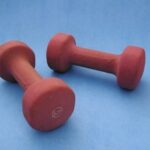Recently I responded to a posting on a Web site in which a person praised the franchise Curves workout system, in which during 30 minutes, clients are hurried through weight lifting stations, but after each set, they continue moving on a “recovery board” to keep the heart rate elevated. I’m not a proponent of this type of workout style, unless maybe it’s done occasionally as a boredom buster; but as a regular way of exercising, I don’t endorse it. The rushed nature leads to poor form and possibly injury. My response is as follows:
An important note about the heart rate thing, keeping it elevated. If you are working out (alternating weight lifting with cardio movement on the recovery boards) to the point where your heart rate is continually elevated at a steady-state elevation, let’s say, 60-70 percent target heart rate, this means that the intensity level of the weight lifting is compromised. You may not think so, but look at it this way: If after a weight lifting set, at least particularly involving the legs, if you are able to immediately transition into cardio movement on one of those boards, this means you have energy to spare. By definition, maximum or all-out intensity in a set, leaves no energy to spare. Thus, a passive, inert rest is required. During this rest, heart rate drops. However, the heart rate was so highly elevated from the ultra-intense effort, that after two whole minutes, it is still elevated. So by the time I start up my next set, my heart rate is still a little elevated.
But elevated heart rate is not what it all comes down to. The Curves protocol of continuous movement means that heart rates are maintained at about 50-70 percent target heart rate, maybe a little higher. It’s a steady line on the graph.
On the other hand, the ultra-intense alternation with inertia approach, means that heart rate alternates between 80-100 percent target heart rate, and 20-50 percent. On a graph, the line bounces up and down.
So which is better, if you have only 30 minutes? The 70-70-70-70 approach? Or the 90-30-90-30 approach?
If I did jumping jacks or something like that in between sets, it would impede my ability to go all out on the next set. My goal is to hammer my muscles with all-out effort, to lift maximally. I can’t do that if I just did mountain climbers on a recovery board, especially if it’s a leg set like hamstring curls.
The super-intense-inertia-super-intense method burns more calories for the same amount of time because more fast-twitch muscle fibers are recruited in maximal intensity lifting sets. Fast-twitch fibers burn more calories than slow-twitch.
Also, this high intensity interval training method creates an “afterburn,” a metabolism that stays elevated for hours after. This has been confirmed with scientific studies. This approach also triggers release of human growth hormone, which is why this type of exercise (switching back and forth from maximum intensity to passive recovery) is sometimes called “hormonal exercise.” HGH incites growth of lean tissue, which increases resting metabolic rate.
Oh, this is such fascinating stuff. Sometimes I have only 30 minutes. I totally smoke my body out with the super intense/passive recovery approach. As I type this, my thighs are burning, even though my workout was many hours ago. My metabolism is still elevated (according to numerous studies).
I can’t hammer my legs if in between sets, I’m jumping around or running in place. The inertia allows me to give 100 percent on the next set.




